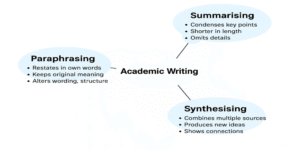Financial information is a critical tool in the global economy, enabling various stakeholders to make informed decisions, evaluate financial performance, and develop future strategies. It is primarily derived from financial statements—including the income statement, balance sheet, and cash flow statement—prepared in accordance with established accounting standards such as the International Financial Reporting Standards (IFRS) or Generally Accepted Accounting Principles (GAAP). The value of financial information lies in its ability to provide reliable, relevant, and comparable data to different groups of users, each of whom interprets and applies this data according to their needs (Atrill and McLaney, 2019).
This article explores the users and uses of financial information and the various ways in which this information supports decision-making processes.
1.0 Investors
Investors are perhaps the most prominent users of financial information. They provide businesses with capital in exchange for either ownership (equity investors) or repayment obligations (debt investors). Their primary focus is the risk-return relationship, which financial information helps them assess.
1.1 Equity Investors
Shareholders rely on financial data to evaluate a company’s profitability, stability, and long-term growth prospects. Metrics such as earnings per share (EPS), return on equity (ROE), and dividend payments are crucial in determining the attractiveness of an investment (Atrill and McLaney, 2019). For example, a company like Apple Inc. publishes comprehensive annual reports that allow investors to assess its market strength, guiding buy-or-sell decisions (Apple, 2023).
1.2 Debt Investors
Creditors, such as bondholders, are more interested in whether a company can repay borrowed funds. They analyse liquidity ratios (e.g., current ratio, quick ratio) and solvency ratios (e.g., debt-to-equity, interest coverage ratio) to assess repayment ability (Needles and Powers, 2013). For instance, banks evaluating whether to extend loans to small businesses often scrutinise cash flow statements to assess repayment capacity (Drury, 2018).
2.0 Managers
Managers within an organisation are both preparers and consumers of financial information. Their objective is to ensure efficient resource allocation, performance evaluation, and achievement of organisational goals.
2.1 Internal Decision-Making
Financial data supports budgeting, forecasting, and investment planning. For instance, cash flow statements enable managers to decide whether to invest in new equipment or delay capital expenditure to maintain liquidity (Drury, 2018).
2.2 Performance Evaluation
Managers use profitability ratios (e.g., gross profit margin, net profit margin) to assess whether the company is achieving its targets. This information also facilitates the establishment of key performance indicators (KPIs) for departments and employees (Atrill and McLaney, 2019).
3.0 Lenders
Lenders, including commercial banks and other financial institutions, rely heavily on financial information to assess the creditworthiness of potential borrowers.
3.1 Risk Assessment
Before granting loans, lenders evaluate the company’s liquidity position, cash reserves, and debt structure. For example, start-ups often struggle to obtain loans due to weak financial ratios and lack of proven cash flow records (Mohammadi and Asnaashari, 2025).
3.2 Loan Covenants
Loan agreements often include financial covenants, such as maintaining an interest coverage ratio above a certain level. Lenders monitor financial statements to ensure borrowers remain compliant, reducing default risk (Atrill and McLaney, 2019).
4.0 Suppliers and Trade Creditors
Suppliers provide businesses with goods and services, often on credit terms, making them highly dependent on the financial stability of their clients.
4.1 Creditworthiness Evaluation
Suppliers assess a company’s current ratio and quick ratio to determine the ability to meet short-term obligations (Needles and Powers, 2013). For example, construction material suppliers may review the balance sheet of a property developer before agreeing to extend credit.
4.2 Ongoing Relationships
If financial statements reveal excessive leverage, suppliers may impose stricter credit terms or require advance payment to mitigate risks (Drury, 2018).
5.0 Employees
Employees are also significant users of financial information, particularly regarding job security, remuneration, and workplace benefits.
5.1 Job Security
Employees monitor a company’s profitability and solvency to gauge long-term stability. For example, during economic downturns, employees closely watch quarterly reports for signals of potential layoffs (Atrill and McLaney, 2019).
5.2 Negotiating Power
Trade unions utilise financial information in wage negotiations, arguing for salary increments when profitability improves (Needles and Powers, 2013).
6.0 Government and Regulatory Authorities
Governments and regulators use financial data for taxation, compliance, and oversight.
6.1 Taxation
Tax authorities rely on financial statements to calculate corporate taxes owed, ensuring businesses pay their fair share of public revenues (Needles and Powers, 2013).
6.2 Compliance
Regulatory bodies such as the Financial Conduct Authority (FCA) in the UK review financial disclosures to monitor compliance with laws on transparency, sustainability, and consumer protection (Atrill and McLaney, 2019).
7.0 Customers
Customers, especially in industries involving long-term contracts (e.g., construction, aerospace), use financial reports to assess whether suppliers can meet obligations.
7.1 Supply Chain Stability
Large firms such as Toyota evaluate suppliers’ financial stability before awarding contracts, ensuring continuity in production (Drury, 2018).
7.2 Pricing and Terms
Customers may negotiate favourable terms if suppliers demonstrate strong financial performance, while financially distressed suppliers may face increased bargaining pressure (Atrill and McLaney, 2019).
8.0 The Public and Media
Finally, the public and media are important users of financial information, particularly in the era of corporate social responsibility (CSR).
8.1 CSR and Ethical Practices
Financial and sustainability reports reveal how businesses allocate resources towards social and environmental initiatives (Needles and Powers, 2013). For example, Unilever’s sustainability reports are widely scrutinised to evaluate its ethical performance.
8.2 Public Perception
The media frequently analyse financial information to assess broader economic and societal implications. Negative disclosures, such as Enron’s accounting scandal, can severely damage a company’s reputation (Drury, 2018).
The users of financial information are diverse—ranging from investors, managers, and lenders to employees, governments, customers, suppliers, and the public. Each group interprets and applies this information differently, depending on their objectives. While investors focus on returns, managers use it for internal decision-making, and governments rely on it for compliance and taxation. The broad use of financial information demonstrates its role as both a decision-making tool and a mechanism for accountability. Thus, understanding these users and their motivations is essential for effective financial management and transparent communication.
References
Apple (2023) Annual Report 2023. Available at: https://www.apple.com/investor/ (Accessed: 1 September 2025).
Atrill, P. and McLaney, E. (2019) Financial Accounting for Decision Makers. 9th edn. Harlow: Pearson.
Drury, C. (2018) Management and Cost Accounting. 10th edn. Andover: Cengage Learning.
Mohammadi, P. and Asnaashari, H. (2025) ‘Exploring the Pattern of Financial Reporting Complexity: A Grounded Theory Approach’, Quarterly Journal of Management Accounting, 17(1), pp. 1–21. Available at: https://qjma.atu.ac.ir/article_18398_en.html
Needles, B. and Powers, M. (2013) Financial Accounting. 11th edn. Andover: Cengage Learning.
Unilever (2023) Sustainability Report 2023. Available at: https://www.unilever.com/sustainability/ (Accessed: 1 September 2025).









